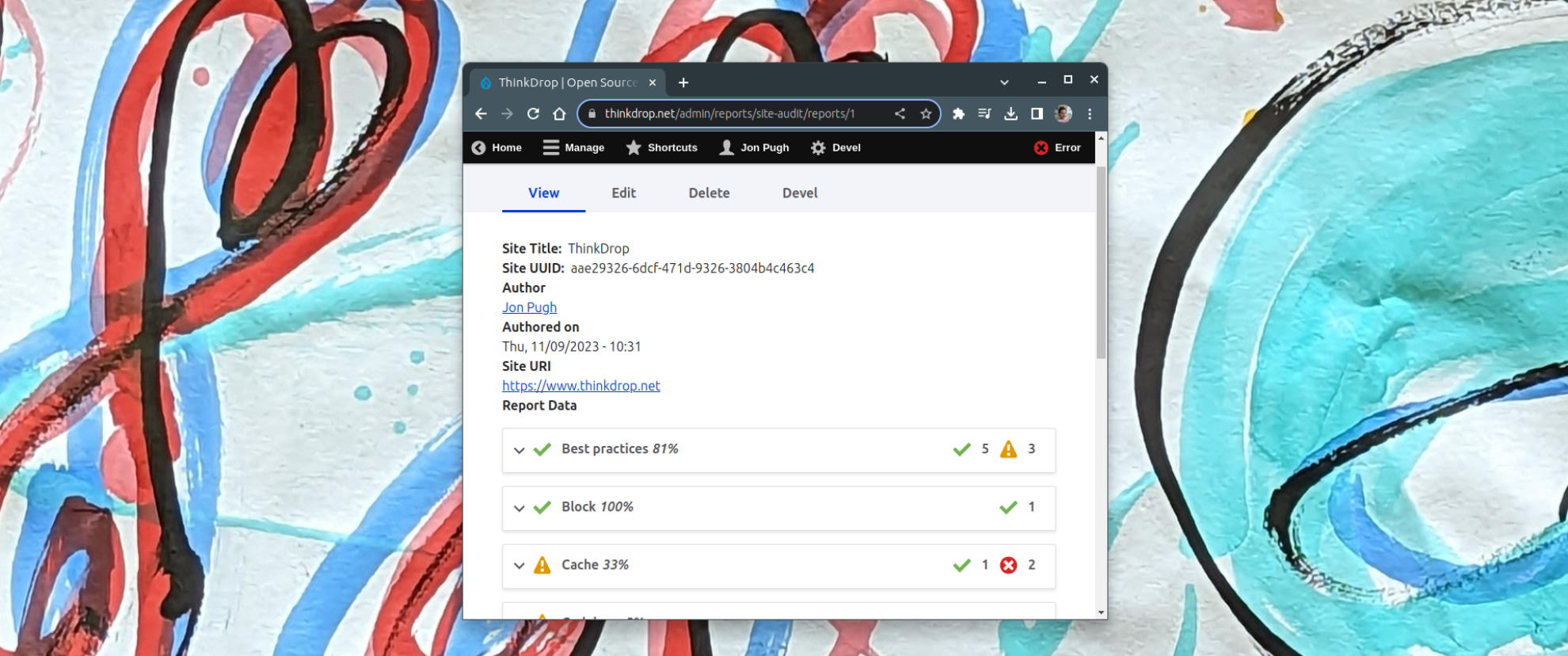Site Audit 4: Track your Drupal sites into the 4th Dimension - Stanford WebCamp
The Site Audit module is a classic. It will reach 10 years old this June. It gives you a detailed report of your Drupal site in the web admin, providing a nice pass-fail display for review. It has a drush command that renders the report in HTML, text, or vulcan.
The next version of Site Audit can now not only display reports, but can save them over time, and send them to remote servers. A "Site Audit Server" module is now available to receive the reports via simple REST API.
This means you can:
- Store site audit reports in sites themselves to view changes over time.
- Add fields to enhance reports.
- Save site audit reports on cron.
- Create a central drupal site for storing site audit reports from other sites.
- Send site audit reports via REST to the Site Audit Server. Receive custom data and do stuff with it.
- Send site audit reports via REST on Cron.
Vardot & ThinkDrop are using this architecture to build a "Drupal Support Dashboard" that can track all the sites we are responsible for, and give us feedback if the sites are in compliance and functioning.
This session will give a full tour of the features, a live code session for creating a Report and Checks, and we will create a simple Site Audit dashboard during the session.


